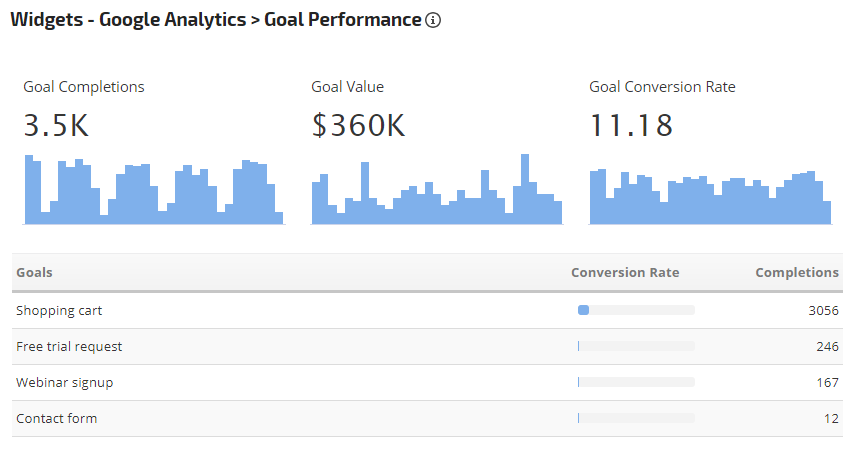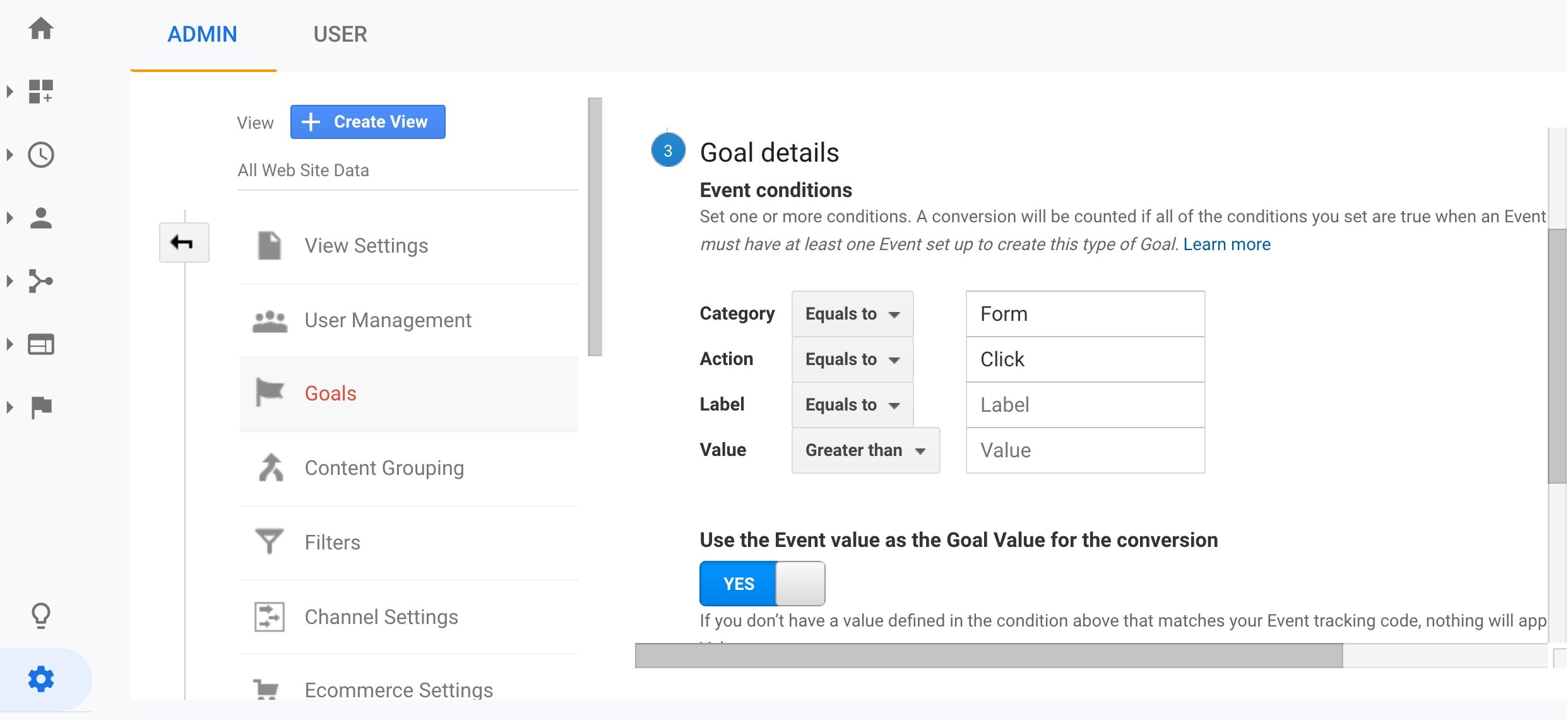Discover the Limitations of Google Analytics Goals: Unveiling the Information Kind That Remain Untrackable
As businesses significantly count on data-driven decision-making, understanding the restrictions of devices like Google Analytics becomes paramount. While Google Analytics Goals deal valuable understandings into user communications, there exist information types that thwart tracking, posturing challenges to a thorough understanding of individual habits. These untrackable information types question about the accuracy and efficiency of the analytics information that companies heavily trust for their digital techniques. Curious to discover the hidden dead spots in your data analysis procedure?
Insufficient Customer Trip Tracking
Insufficient user journey monitoring within Google Analytics can prevent the ability to precisely analyze individual behavior. When the user trip is not fully tracked, there are gaps in the information that protect against a thorough understanding of how users interact with a site. This lack of insight can cause missed out on possibilities for optimization and enhancements to the individual experience.
One common issue with incomplete user journey monitoring is the lack of ability to see the complete path that individuals take before completing an objective or leaving the website. Without this details, it is testing to determine where customers might be experiencing obstacles or friction points that stop them from converting. Additionally, incomplete tracking can obscure the effect of particular advertising efforts or website adjustments on customer habits.
To address this constraint, it is critical to establish appropriate tracking devices within Google Analytics to catch the entire customer journey. This might include establishing occasion tracking, goal funnels, or using devices like Google Tag Supervisor to guarantee that no important communications go unrecorded. By gaining a comprehensive sight of the individual trip, website proprietors can make more educated choices to improve user engagement and drive conversions.
Acknowledgment Challenges
Navigating via attribution difficulties in Google Analytics needs an extensive understanding of just how various touchpoints add to the total conversion procedure. Acknowledgment challenges arise from the complexity of modern-day consumer trips, where customers communicate with numerous networks prior to transforming.
One typical attribution challenge is the problem in attributing conversions to the correct resource, particularly in instances where individuals interact with numerous networks prior to converting. In addition, cross-device tracking positions another acknowledgment challenge, as customers typically switch between devices throughout their journey, making it testing to track their interactions perfectly.
Offline Conversions
Offered the difficulties associated with attributing conversions precisely in online networks, the measurement of offline conversions provides a considerable possibility for marketing experts seeking a more thorough understanding of their customers' trip. Offline conversions refer to actions that consumers absorb the real world, such as making purchases in brick-and-mortar shops or over the phone, participating in events, or involving with printed materials - what data is google analytics goals unable to track. These conversions are vital for organizations that operate both online and offline, as they supply valuable insights right into the effectiveness of advertising projects throughout various touchpoints
Tracking offline conversions generally postured a significant obstacle for marketing experts, as it was challenging to connect these actions back to particular online interactions properly. Nonetheless, with innovations in modern technology, such as the combination of CRM systems, one-of-a-kind identifiers, and discount coupon codes, organizations can currently bridge the gap between online and offline data to gain a more alternative view of customer behavior. By efficiently determining offline conversions, online marketers can optimize their approaches, allot sources a lot more efficiently, and ultimately improve the total consumer experience.
Cross-Device Monitoring
Cross-device monitoring plays an additional reading important function in recognizing the interconnected nature of customers' digital interactions throughout several devices. In today's omnichannel world, where customers effortlessly switch in between tablets, desktop computers, and smartphones, tracking their behavior throughout these tools is important for marketing professionals to gain a detailed sight over at this website of their customer journey.

Moreover, privacy problems and regulations such as GDPR and CCPA have even more challenging cross-device monitoring. With customers requiring even more control over their data and increased constraints on monitoring technologies, marketing experts must find privacy-compliant and ingenious methods to link individual interactions across gadgets.
Dynamic Material Interaction
Recognizing user engagement with dynamic web content is crucial in optimizing electronic marketing methods for boosted target market interaction. Dynamic content describes internet site components that alter based on customer actions, preferences, or various other aspects, offering an individualized experience. Tracking customer interactions with dynamic material poses obstacles for conventional analytics tools like Google Analytics.
While Google Analytics can track basic communications like clicks and page sights, it might battle to catch even more nuanced engagements within vibrant material. what data is google analytics goals unable to track. Metrics such as time invested on particular vibrant components, hover activities, or communications see within pop-ups are usually not conveniently measurable making use of conventional tracking methods. This constraint hinders marketers' capability to completely realize just how users are involving with dynamic web content and tailor their techniques accordingly

Final Thought
To conclude, Google Analytics goals have constraints in tracking incomplete customer journeys, associating conversions precisely, recording offline conversions, tracking cross-device interactions, and measuring dynamic content engagement. These constraints highlight the value of checking out added monitoring approaches and devices to get a more extensive understanding of user behavior and conversions past what Google Analytics can provide.
While Google Analytics Goals offer important insights into individual interactions, there exist data types that thwart tracking, presenting difficulties to a comprehensive understanding of user habits.Insufficient individual journey tracking within Google Analytics can hinder the ability to accurately assess user actions. When the user journey is not totally tracked, there are voids in the information that protect against a comprehensive understanding of how users interact with a website.One common issue with insufficient individual journey tracking is the inability to see the complete path that users take before completing an objective or leaving the site. By obtaining a thorough sight of the customer journey, internet site proprietors can make even more informed choices to improve customer involvement and drive conversions.
Comments on “What Data Is Google Analytics Goals Unable to Track: Crucial Info”